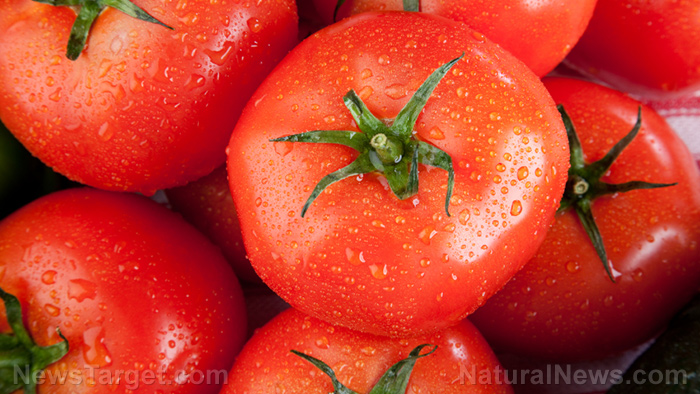
Advertisement
Tomatoes are a staple in edible gardens. Despite taking an entire season to mature, tomatoes remain one of the go-to crops for beginner gardeners, and for good reason. Taking care of tomatoes is a lot easier than it’s made out to be.
In fact, the success of your tomato-planting efforts depends, for the most part, on the preliminaries you’ll be doing before planting those seeds or seedlings. But before anything else, here’s a quick run-through of some of the best things about this ultimate garden crop.
The goodness of tomatoes
Tomatoes can be found in almost all kinds of foods, and this is a good thing. These plump little fruits are considered one of the healthiest superfoods out there because of their incredible nutrition profile.
In fact, a single tomato can contain up to 40 percent of the average person’s recommended daily intake of vitamin C, an essential immune-boosting nutrient. Lycopene, an antioxidant found in tomatoes, also helps protect cells from inflammation linked to chronic diseases.
Recent studies also found that eating tomatoes can lead to a reduced risk of cancers, including those of the prostate, lungs, stomach, pancreas and colon. Taken together, it should come as no surprise, then, that tomatoes are one of the most popular garden crops.
Tomato planting tips
Considering planting tomatoes? Here are some important tips to keep in mind to ensure you’re off to a good start:
Choose the right variety
Getting this first step right isn’t an option – it’s a requirement. Choose a plant that isn’t ideal for your climate or soil conditions and you can kiss those tomatoes goodbye. Here are four important factors to consider in choosing the right tomato plant:
- Climate – Choose varieties that are best suited to your climate. Getting this right cuts your duties as a gardener in half.
- Preference – Tomatoes come in all shapes and sizes, so decide beforehand if you’d prefer to get the smaller varieties like cherry tomatoes or the larger ones like beefsteaks.
- Determinate or indeterminate – Determinate tomatoes are the bush varieties that tend to bear fruit all at once. Indeterminate varieties, on the other hand, tend to produce fruit up until the frost sets in.
- Disease-resistance – Some varieties are more susceptible to plant diseases, but others are not. Look them up and go for varieties that can tolerate the conditions in your area.
Provide lots of light
Tomato seeds and seedlings need strong, direct sunlight. If growing tomatoes from seeds, it’s recommended that you use artificial lamps trained directly on the seeds for 14 to 18 hours each day.
If growing tomatoes from seedlings, let them harden indoors before transplanting them onto the garden bed. Once the seedlings are ready to be planted in the ground, be sure to choose the sunniest spot. It should get at least seven hours of direct sunlight throughout the day.
Preheat the garden soil
Tomatoes love heat, and they are very sensitive to soil temperature. If the ground is still too cold, especially during the early spring months, you can speed things up by laying a sheet of plastic on top of the garden bed for a couple of days before planting the seeds or seedlings.
Bury the stems
Plant the seeds or seedlings deep into the ground. Doing so encourages tomatoes to develop strong roots along their stems, resulting in a sturdier plant.
Add a blanket of mulch
Once the soil has heated up enough, you’ll need to add mulch. Mulch helps keep the soil moist and protects the plants from catching soilborne diseases.
Remove the bottom leaves on a regular basis
Once the tomato plants reach about three feet tall, you’ll need to remove the bottom-most leaves from the stem. These are the oldest leaves, and they are often the first to catch plant diseases. Removing them helps prevent plant pathogens from taking hold.
Pinch and prune
Pinching means removing some of the suckers that form along the plant’s stem. More often than not, these suckers aren’t going to bear fruit, so it’s best to just get rid of them. Pruning the leaves also ensures that none of them are competing for sunlight.
Water regularly
As the fruits develop, you’ll also need to water them deeply and regularly. As a general rule, make sure the plants get at least an inch of water each week.
Fertilize sparingly
It doesn’t hurt to add a bit of fertilizer from time to time. Just don’t overdo it as too much fertilizer can cause the tomato plant to die on the spot.
Practice companion planting
Planting tomatoes alongside other plants can increase their yield and protect them from pests. This gardening technique is called companion planting, and it is often done so that plants can benefit from each other. In this case, tomatoes are best planted beside basil and marigold since these plants repel pests.
Tomatoes are the quintessential garden crop. Rich in essential nutrients and beneficial plant compounds, you’d be missing out if you don’t have at least a couple of tomato plants in your edible garden.
Sources:
Advertisements







